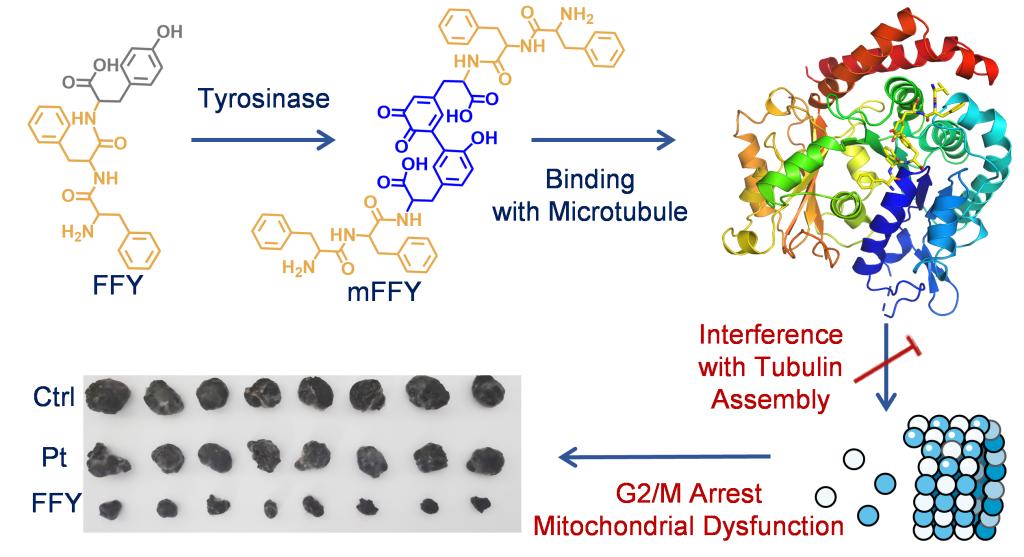

Abstract
Biosynthesis has been a diverse toolbox to develop bioactive molecules and materials, especially for fabricating modified peptides and their assemblies induced by enzymes. Although desired chemical structures and nanoarchitectures have been achieved, the subsequent interferences of peptide assemblies with organelles and the cellular pathways still remain unsolved important challenges. Herein, we developed a new tripeptide, phenylalanine–phenylalanine–tyrosine (Phe–Phe–Tyr, or FFY), which can be intracellularly oxidized and in situ self-assemble into nanoparticles with excellent interference capability with microtubules and ultimately reverse the drug resistance of melanoma. With the catalysis of tyrosinase, FFY was first oxidized to a melanin-like FFY dimer (mFFY) with a diquinone structure for further self-assembling into mFFY assemblies, which could inhibit the self-polymerization of tubulin to induce severe G2/M arrest (13.9% higher than control). Afterward, mitochondrial dysfunction was also induced for overproduction of cleaved caspase 3 (3.1 times higher than control) and cleaved PARP (6.3 times higher), achieving a high level of resistant reversing without chemotherapeutic drugs. In vivo studies showed that the resistant melanoma tumor volumes were reduced by 87.4% compared to control groups after FFY treatment by peritumoral injections. Overall, this tyrosinase-induced tripeptide assembly has been demonstrated with effective intrinsic apoptosis against drug-resistant melanoma, providing a new insight into utilizing biomolecules to interfere with organelles to activate certain apoptosis pathways for treatment of drug-resistant cancer.
文章链接: Journal of the American Chemical Society 2022, 144, 16, 7337-7345.